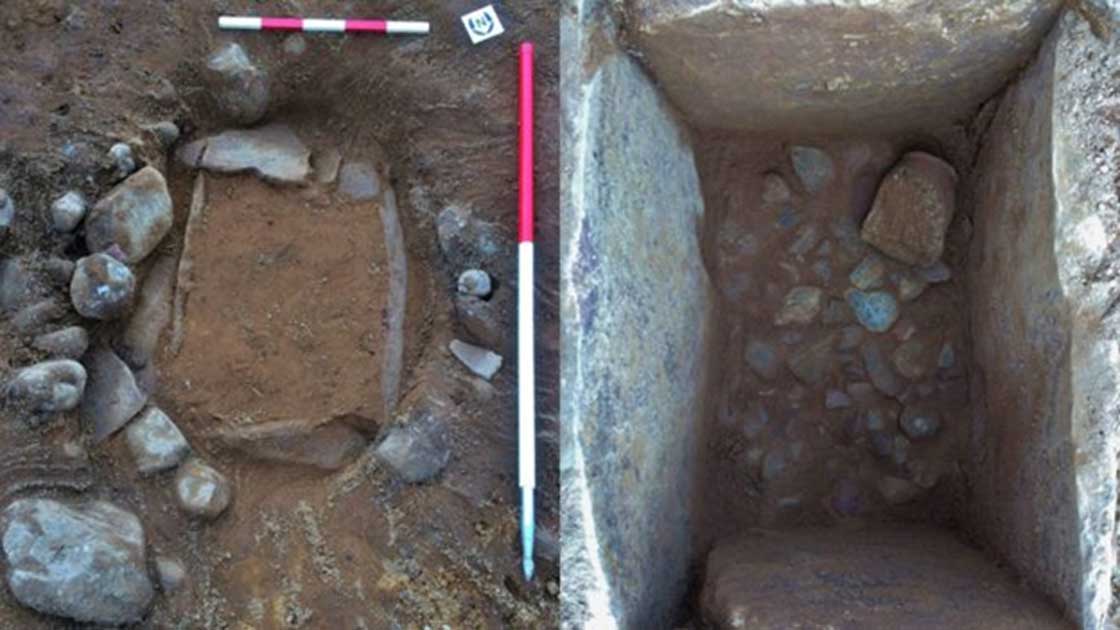“Special Site” for Bronze Age Burials Discovered Near Loch Ness
Archaeologists claim that they have found a 'special site' – as they described it – for Bronze Age burials near Loch Ness, after the discovery of a second 4,000-year-old peculiar grave containing a gift for the afterlife.
Discovery of Second Bronze Age Cist Makes the Site “Special”
Loch Ness is a large, deep, freshwater loch in the Scottish Highlands, best known for alleged sightings of the cryptozoological Loch Ness Monster, also known affectionately as "Nessie.” Nowadays, however, Loch Ness makes headlines for reasons that are not related to the mythical monster. The discovery of a second 4,000-year-old grave in the Scottish village of Drumnadrochit, took place at the same exact area a stone-lined grave was found two years ago, as BBC News reports. Archaeologists from the AOC Archaeology Group unearthed the first grave during construction work for a new medical center in Drumnadrochit back in 2015. However, earlier in 2017 they were invited back by Compass Building and Construction Services and Loch Ness Homes to the same site to further explore the area.
It didn’t take them long to notice a small stone-lined grave - known as a short cist - covered by a large sandstone capping stone. “The discovery of a second Bronze Age cist on the site provides increasing evidence for the special selection of this site in the prehistoric landscape as a location for ceremonial funerary activity,” Mary Peteranna, operations Manager for AOC Archaeology's Inverness office told BBC. And continued, “This cist, along with the medical center cist and a second burial pit, is generating much more information about the prehistory of Glen Urquhart. Historically, there was a large cairn shown on maps of the area but you can imagine that centuries of ploughing in these fields have removed any upstanding reminders of prehistoric occupation."
- Could Nessie the Loch Ness Monster be a giant, 15-foot Eel? (Probably not)
- Eilean Donan Castle: Idyllic Scottish Setting Carries a Dark History
- A Spellbinding Story of Discovery: A Medieval Grave for a Wizard and a Magical Artifact

Loch Ness, at the north-east end of the Great Glen Fault, which divides the Highland zone. The thirteenth-century Urquhart Castle can be seen in the foreground. (Public Domain)
Furthermore, Peteranna revealed that her team discovered a displaced capstone from another grave as well, “During the work, we actually found a displaced capstone from another grave that either has not survived or has not yet been discovered. So it's quite likely that these graves were covered by stone cairns or mounds, long-since ploughed out,’’ she tells BBC News.
Grave Includes Distinctive Beaker Pot of that Era
In spite of the fact that soil had filled the grave, causing severe damages to the burial, excavation works revealed that the grave included a single Beaker pot, positioned inside as an afterlife gift at the time of burial. As the experts suggest, Beaker pots are a typical artifact type of the early Bronze Age in Europe, beginning around 2400 BC. According to Daily Mail, beakers with their characteristic flashy necks and geometric patterns have been found several times before in individual burials next to other artifacts like arrowheads, wrist-guards and copper knives. The new Drumnadrochit pot is a small Beaker with plain engraved decoration, similar to other Scottish examples from that period (2200-1900 BC), while it is almost identical in size to the one unearthed on the medical center site in 2015, but with a less ornate design.
- 5,000-Year-Old Mystery Structure Discovered Near Stone Age Temple in Scotland
- Moon Rituals, Head-Binding, and Ground-up Bones: Highlighting the Mysterious Beaker People
- Did Dutch Invaders Wipe Out Bronze Age Britons During the Construction of Stonehenge?

The single Beaker pot found in the latest grave Loch Ness grave. (Image: AOC Archaeology)
According to BBC News, further analysis of the Beaker pot will take place in order to verify if, like the medical center Beaker, it contained an afterlife gift or offering at the time of burial. Ultimately, archaeologists note that Bronze Age finds of particular archaeological value have been made across the Scottish Highlands during the past few decades, including the bones, the skull and teeth of a woman known to archaeologists as “Ava.” The woman’s skeletal remains were discovered at Achavanich in Caithness in 1987, while last year a forensic artist named Hew Morrison (a graduate of the University of Dundee), reconstructed the face of a young woman who died more than 3,700 years ago.
Top image: Latest Bronze Age grave found near Loch Ness, left with soil, right after excavation. (Credit: AOC Archaeology).



















